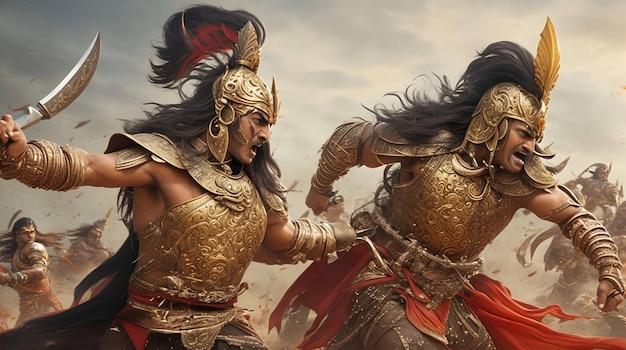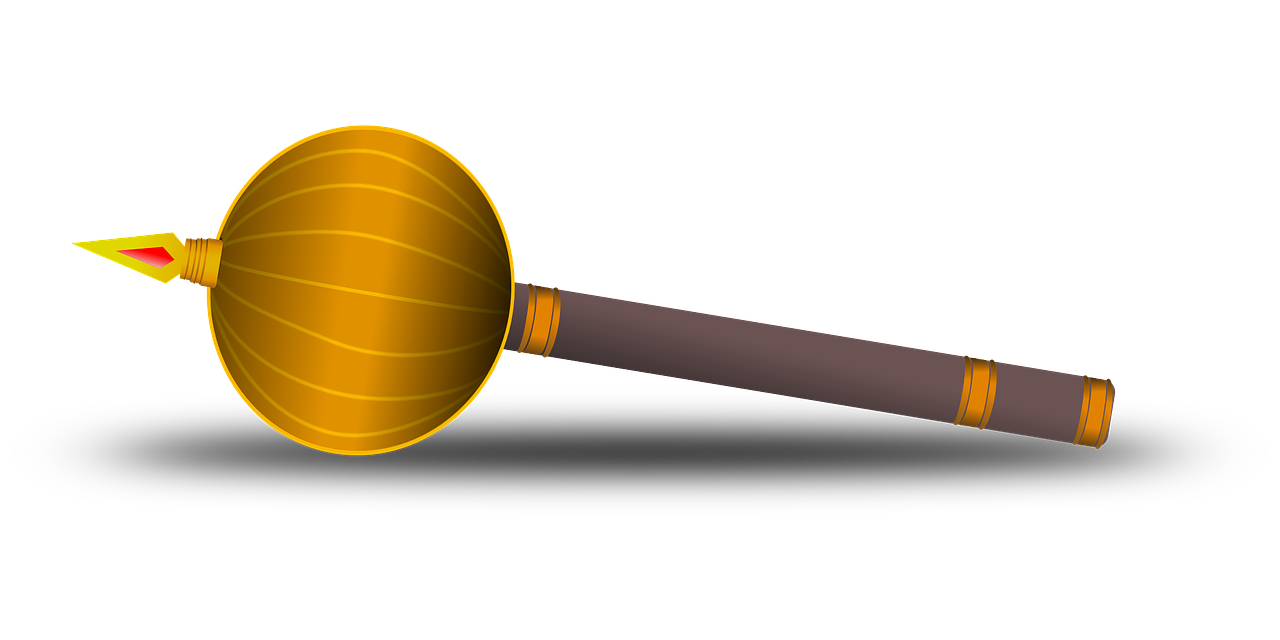Welcome, dear readers, to a fascinating journey through the ancient texts that have shaped the foundation of Indian culture for millennia – the Vedas and the Mahabharata. In this blog post, we will delve into the depths of these sacred scriptures, unraveling their stories, beliefs, and teachings.
The Vedas, considered the oldest Hindu scriptures, possess a mystical aura that has mesmerized scholars and spiritual seekers throughout history. They provide invaluable insights into the religious, philosophical, and social beliefs of ancient India. We will explore how the Vedas were written, the story behind the Rig Veda, and the significance of these scriptures in shaping the lives of millions.
Moving forward, we will unlock the wonders of the Mahabharata, an epic of colossal proportions. This epic poem, which is said to contain the wisdom of the universe, encompasses tales of valor, betrayal, and divine intervention. Discover the immense importance of the Mahabharata in Indian culture and the enduring lessons it imparts to humanity.
Get ready to immerse yourself in the enchanting world of the Vedas and the Mahabharata, as we unravel their secrets, dispel misconceptions, and embark on a journey of knowledge and enlightenment. Let us venture forth to understand the essence of these ancient texts and witness their timeless relevance even in the modern world.
So, fasten your seatbelts and get ready to explore the depths of India’s ancient wisdom in our captivating voyage through the Vedas and the Mahabharata.
Namaste 🙏

What Are the Vedas and Mahabharata?
The Vedas and Mahabharata are like the Brad and Angelina of ancient Indian literature. They’re famous, influential, and have stood the test of time. But what exactly are these ancient texts, and what makes them so special?
The Mysterious Vedas
The Vedas are a collection of ancient scriptures that were penned thousands of years ago. You could say they’re like the Kardashians of the Hindu religious texts – they’ve been around forever, and people still can’t get enough of them!
But seriously, the Vedas are considered the ultimate source of knowledge in Hinduism. They are written in Sanskrit, the ancient language of the gods (or so it seems), and cover a wide range of topics, from rituals and ceremonies to music and philosophy. It’s like having Gwyneth Paltrow’s Goop website combined with an encyclopedia of ancient knowledge.
The Epic Mahabharata
If the Vedas are the Leonardo da Vinci of ancient Indian texts, then the Mahabharata is the Mona Lisa. It’s an epic poem that tells the story of the great Kurukshetra War, a battle for power and honor that makes Game of Thrones look like a kindergarten squabble.
The Mahabharata is more than just a war story, though. It’s like the Indian version of an HBO series – packed with drama, romance, political intrigue, and enough family drama to make the Kardashians blush. Seriously, if they made a TV show about the Mahabharata, it would give Game of Thrones a run for its money.
The Connection Between the Vedas and Mahabharata
Now, you might be wondering, what do the Vedas have to do with the Mahabharata? Well, it turns out that the Mahabharata is not just an action-packed epic; it also contains snippets from the Vedas. It’s like the ultimate mash-up of ancient Indian literature – a remix of divine knowledge and gripping storytelling.
The Vedas are like the foundation on which the Mahabharata is built. They provide the philosophical and spiritual framework for the epic tale. It’s like having a fancy gourmet meal with a side of deep spiritual insight – a true feast for the mind and soul.
Wrapping Up
So there you have it – a crash course on the Vedas and Mahabharata. They may be ancient texts, but their influence and relevance are still felt today. Whether you’re a history buff, a spiritual seeker, or just someone looking for a good story, the Vedas and Mahabharata have got you covered. So go ahead, dive into the world of ancient Indian literature and let these timeless texts captivate your imagination.

FAQ: What is the Vedas and Mahabharata?
The Vedas and the Mahabharata are two of the most important texts in Hinduism. They are ancient Indian scriptures that have shaped the religious and cultural beliefs of millions of people for centuries. In this FAQ-style article, we will explore the significance of the Vedas and the Mahabharata, their stories, their teachings, and more. So, let’s dive in and unravel the mysteries of these remarkable texts!
How are the Vedas written
The Vedas are a collection of ancient sacred texts written in Sanskrit, the oldest known language of the Indian subcontinent. The word “Veda” means “knowledge” or “wisdom,” and these texts are considered to be divine revelations. The Vedas were originally passed down orally from generation to generation before being written down around 1500 BCE. They are composed of hymns, rituals, and philosophical teachings.
What is the story of the Rig Veda
The Rig Veda is the oldest and most important of the four Vedas. It contains hymns dedicated to various deities and explores profound philosophical concepts. The Rig Veda tells stories of gods, heroes, and mythical creatures and provides insights into ancient Indian society. It is a treasure trove of knowledge, offering guidance on everything from spirituality to morality.
What is the importance of the Mahabharata to Indian culture
The Mahabharata is an epic narrative that holds immense significance in Indian culture. It is one of the longest and most complex texts ever written, comprising of over 100,000 verses. The Mahabharata tells the story of the life and times of the Kuru dynasty and the great Kurukshetra war. It delves into themes of duty, righteousness, honor, and the complexities of human relationships. The characters in the Mahabharata, such as Krishna and Arjuna, have become iconic symbols of wisdom and courage.
Who should not read the Vedas
There are no restrictions on who can or cannot read the Vedas. However, traditionally, certain sections of society were not allowed to study or recite the Vedas. These restrictions were based on the Indian caste system, which classified people into four main social groups. The lower castes, such as the Shudras, were considered to have lesser social standing and were excluded from Vedic rituals and knowledge. However, in modern times, access to the Vedas is open to all, regardless of caste or gender.
What is the real name of Lord Shiva
Lord Shiva, one of the most revered deities in Hinduism, has many names and forms. He is often referred to as “Mahadev,” which means “Great God.” Other names for Lord Shiva include “Shankara,” “Rudra,” and “Nataraja.” Each name reflects a different aspect or attribute of Lord Shiva’s divine nature.
What do the Vedas say about Shudras
The Vedas mention the Shudras as one of the four varnas, or social classes. However, it is important to note that the interpretation of Vedic texts is diverse and has evolved over time. While some verses may seem to imply a hierarchical order among the varnas, there are also verses that emphasize the unity and interconnectedness of all beings. Ultimately, Hinduism teaches the equality of all souls, regardless of social status.
How should a woman be according to the Vedas
The Vedas offer diverse perspectives on the role of women in society. While some verses depict women in traditional domestic roles, others portray them as powerful goddesses and sages. The concept of ideal femininity in the Vedas is multifaceted and recognizes the inherent strength and wisdom of women. It is important to remember that societal attitudes towards gender roles have evolved since the time of the Vedas, and interpretations of Vedic teachings also reflect these changes.
What do Hindus learn from the Vedas
Hindus consider the Vedas to be a wellspring of knowledge and spiritual wisdom. They contain hymns, prayers, rituals, and philosophical insights that guide believers in their spiritual and moral journey. The Vedas teach principles such as dharma (duty/righteousness), karma (actions and consequences), and moksha (liberation from the cycle of birth and death). Hindus learn about the cosmic order, the nature of reality, and the path to self-realization through studying and reflecting on the Vedas.
Is the Mahabharata older than the Vedas
No, the Mahabharata is not older than the Vedas. The Rig Veda, the oldest of the Vedas, dates back to around 1500 BCE. The Mahabharata, on the other hand, is believed to have been composed between 400 BCE and 400 CE. While both texts are ancient, the Vedas predate the Mahabharata by several centuries.
Who are Brahmins according to the Vedas
According to the Vedas, Brahmins are members of the highest varna, or social class. They are traditionally regarded as priests, scholars, and custodians of Vedic knowledge. The term “Brahmin” originally referred to individuals who displayed qualities of wisdom, purity, and self-discipline. However, it is important to remember that the caste system has evolved and changed over time, and individuals are now recognized for their qualities and actions rather than their birthright.
The Vedas and the Mahabharata are rich sources of ancient wisdom and spiritual insights. They provide a glimpse into the beliefs, values, and stories that have shaped Indian culture for millennia. While the Vedas are a collection of hymns, rituals, and philosophical teachings, the Mahabharata is an epic narrative that explores complex themes of duty, righteousness, and human relationships. By delving into these texts, we can deepen our understanding of Hinduism and appreciate the profound wisdom they offer. So, let’s embark on this fascinating journey of discovery, guided by the Vedas and the Mahabharata!
